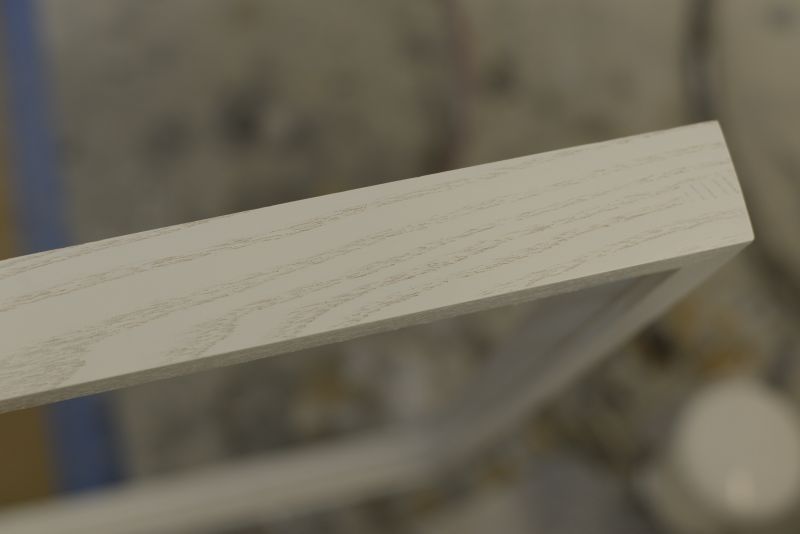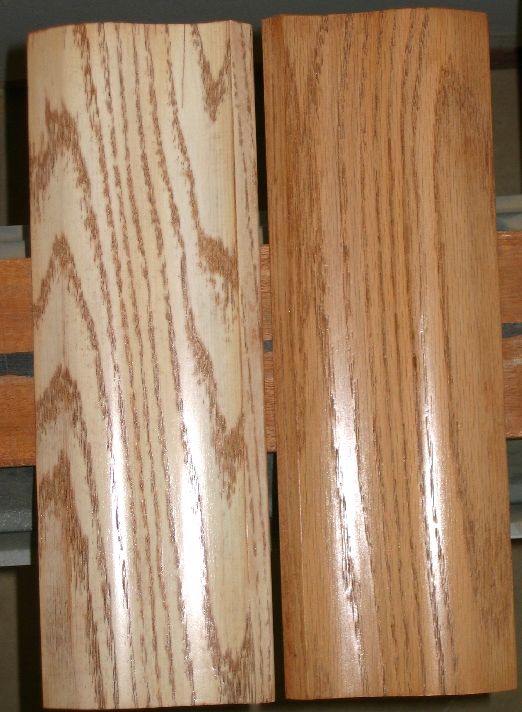Question
I have to paint on white 2 inch wide ash frames and I am applying two coat of Aqualente water base white pigmented, but the paint doesn't penetrate the textured grain. I know it's possible to fill the grain, but I would like to avoid that. Any suggestions?

Forum Responses
(Finishing Forum)
From contributor M:
If you want a perfectly smooth surface, you have to fill it. There are a number of ways you can go about this. Of course you could continue with the Aqualente, and after applying and sanding down 8 coats, you might have managed to fill the grain. That is not very practical or very cost effective. You can fill the grain easiest with thinned down joint compound, sand it flush, prime and topcoat.
For your bag of tricks, don't forget about this open pore effect. Though you don't want it in this application, in the future you can use it in different ways to produce custom finishes. For example, you can tint it any color you like and thin the primer/paint to make it translucent, then give it a protective clear coat. It looks like stain that did not fill the pores. I've seen this look on some imported furniture with a pickled finish (they used rubber wood).
Another approach is to sand the paint/primer smooth, glaze over it, and then apply a protective clear coat. Again, you can tint it any color you want and use any color glaze you want. I did both of the samples with variations of this technique.

7/21 #5: Paint ash ...
From contributor M:'
Sadly this problem brings to light the problem finishers like me have always faced. Fixing cabinetmakers, architect's or designer's choices or materials. There really is no good reason to use ash in this application, none that I can think of.
It's a beautiful wood with lots of possibilities, as Paul has pointed out. I recently did a kitchen of ash. It was bleached then sealed, then glazed with a bluish tone, sealed again. Then glazed with a purplish tone, sealed again, then the final glaze of white was applied. It was then topcoated. It was a strange color combination that produced a very nice off white, with different highlights, but it worked and the architect was truly happy. I use a product from Becker that has a max build of 17 mils before failure.
The choices to get a smooth surface are far too numerous to list. I would either use joint compound or Bondo thinned down with lacquer thinner. I usually apply my fillers prior to any primers. I like the way they sand better. As opposed to sanding the primer along with the filler. But using maple or poplar would have been so much easier.